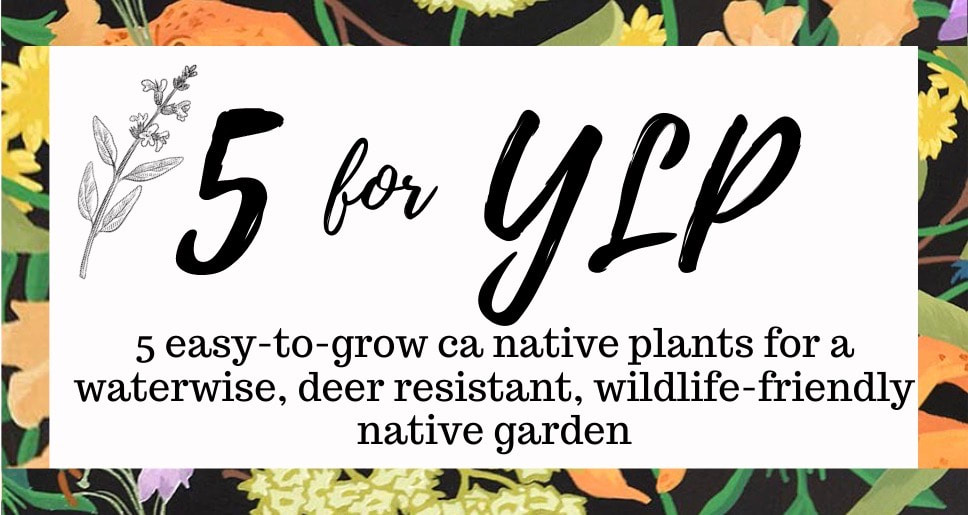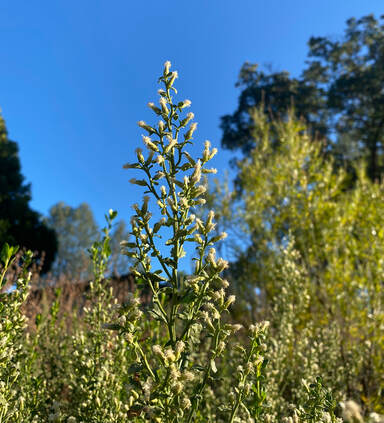Native Plants for YLP: Upright Coyote Brush
(Baccharis pilularis var. consanguinea)
(Baccharis pilularis var. consanguinea)
|
by Patty Groos ("Poppy Patty")
#4 in our “5 for YLP” series, Upright Coyote Brush (Baccharis pilularis ssp. consanguinea) is another deerproof, drought-tolerant California native plant for your YLP garden. Evergreen and simple to grow, it is a standout plant, working as a hedge or specimen, and providing habitat for butterflies, bees, and birds. |
Upright Coyote Brush, Baccharis pilularis ssp. consanguinea
 Young Coyote Brush in the fall
Young Coyote Brush in the fall
Upright Coyote Brush is a lovely, tough evergreen shrub that blooms with subtle flowers in late fall. It is blooming in YLP gardens right now! Although it is fast growing with lovely light green new foliage, it is one of the only native evergreen shrubs that deer do not eat.
Travelling toward the coast to Pismo or Monterey, you will see stands of Upright Coyote Brush in the wild. Its small waxy leaves protect it against heat, drought, and wind, and unlike many other California natives, it tolerates garden conditions: it thrives not only in drought, but also with supplemental water in hot weather. Properly maintained, it is fire resistant. This workhorse plant prefers full or part sun here in the foothills, and will tolerate a variety of soils including alkaline, clay and sand. It accepts pruning and though it can grow to 10’ high, we find that it tops out here at around 7’.
One member of our group has planted twelve of the upright form to fill out a hedgerow along her property line, and they are thriving with twice monthly watering during the summer.

